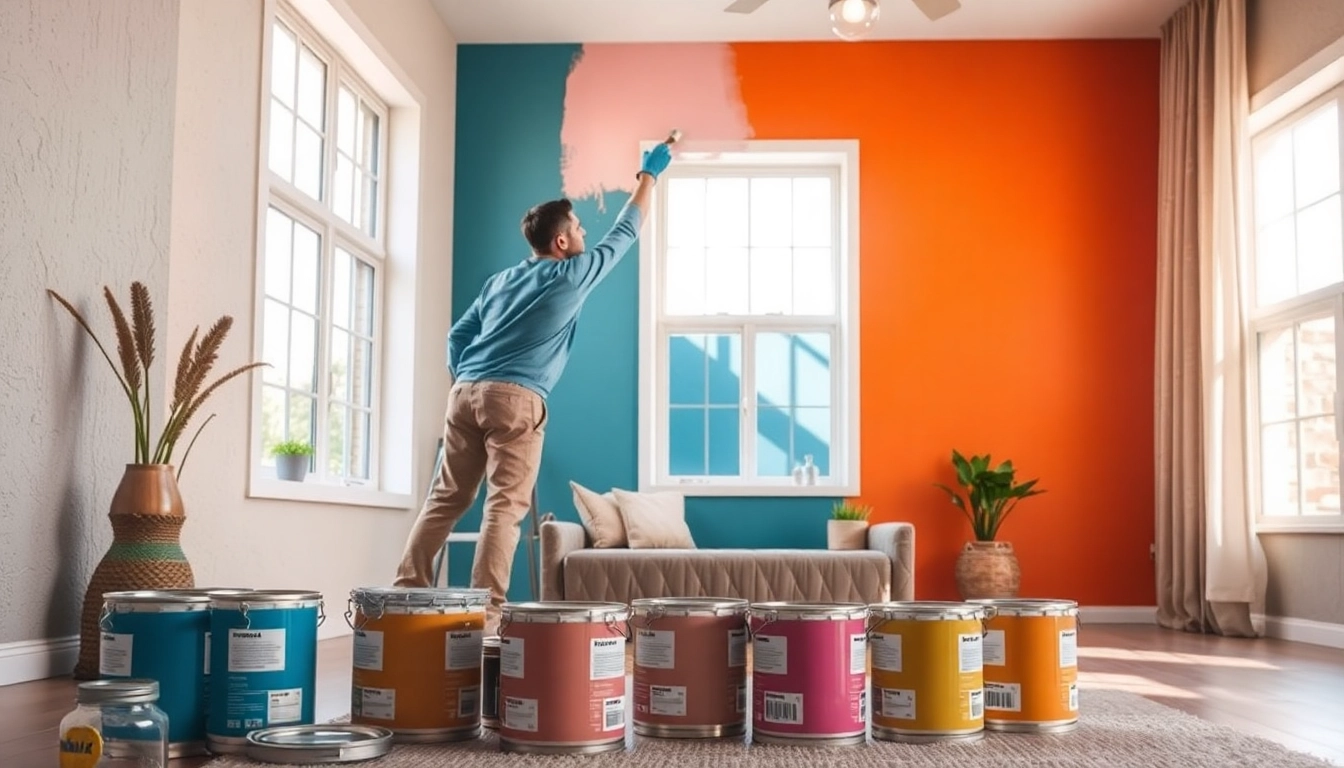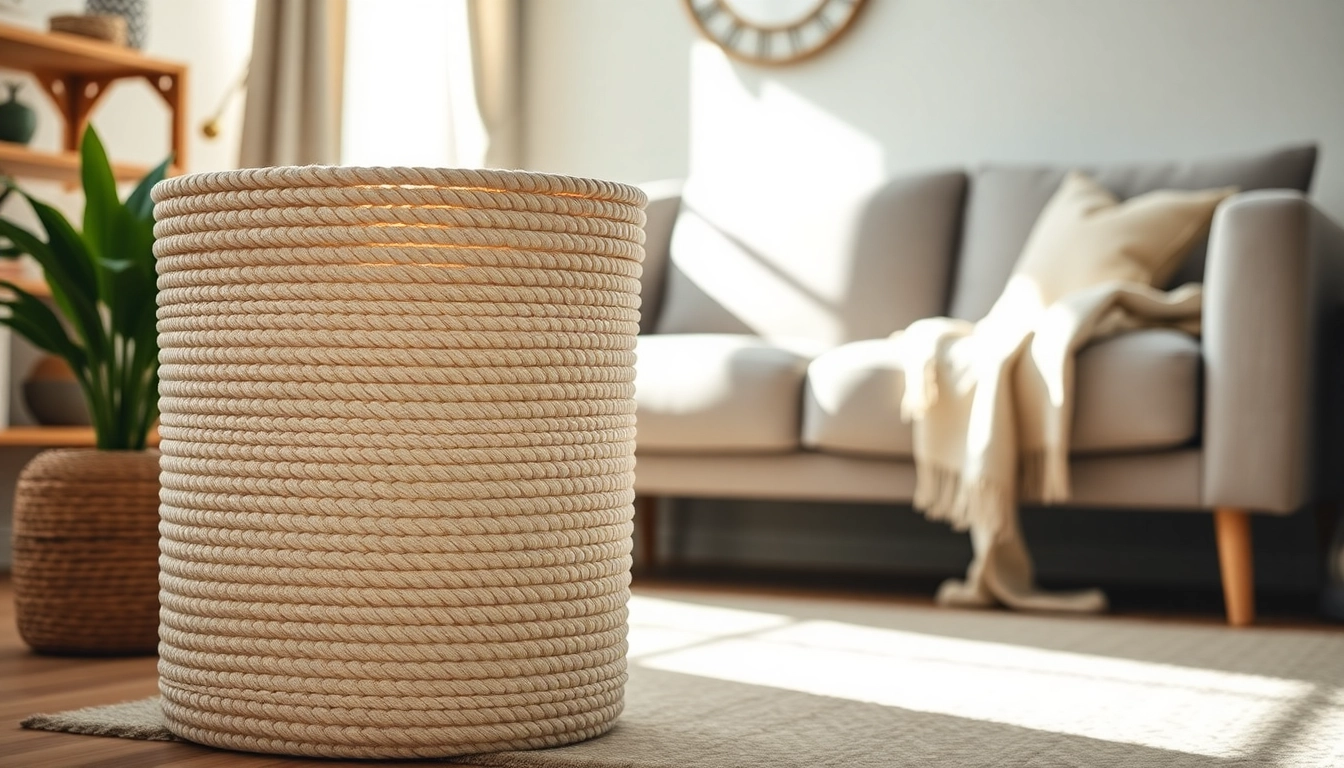Understanding Residential Painting
What is Residential Painting?
Residential painting encompasses a wide range of services designed to enhance the exterior and interior aesthetics of a home. It involves the application of paint to various surfaces, encompassing walls, ceilings, trim, and exterior siding. This process not only improves the visual appeal of a residence but also protects surfaces from wear and tear, weather damage, and other environmental factors. Whether it’s refreshing a living room or preparing the exterior of a home for sale, residential painting plays a crucial role in maintaining and enhancing property value.
The Importance of Residential Painting
Residential painting goes beyond mere aesthetics; it has significant implications for home maintenance and value. A fresh coat of paint can transform a dull living space into a vibrant environment, influencing not only the mood and comfort of its residents but also the perceptions of potential buyers. According to research, homes with well-maintained paint jobs can fetch higher market prices, making the initial investment in quality painting services worthwhile. Furthermore, proper painting techniques and materials can prevent issues such as mold, moisture, and peeling, leading to lower long-term maintenance costs.
Types of Residential Painting Services
The world of residential painting is diverse, with options tailored to meet various needs:
- Interior Painting: This service focuses on enhancing indoor spaces, allowing homeowners to choose colors and finishes that reflect their style. It typically includes walls, ceilings, moldings, and sometimes cabinetry.
- Exterior Painting: Exterior painting protects the home from environmental damage while revitalizing its curb appeal. This includes surfaces such as siding, decks, and fences.
- Cabinet Painting: This specialized service involves refinishing or painting kitchen and bathroom cabinets to give them a fresh look without the expense of replacement.
- Trim and Molding Painting: Emphasizing architectural details, this service often highlights trims, baseboards, and moldings, adding to the character of a room.
- Accent Walls: A focus on a single wall painted in a distinctive color adds visual interest to a room while allowing for creative expression.
Preparing for Your Residential Painting Project
Choosing the Right Colors
The color selection process is crucial in residential painting. Vibrant hues can evoke feelings of warmth and energy, while subdued tones create calm and serenity. When choosing colors, homeowners should consider their space’s lighting conditions, existing furnishings, and the overall ambiance they wish to achieve. Online tools and paint sample books can help visualize color choices in context, ensuring that the final decision is both practical and satisfying.
Assessing Your Space and Needs
Before commencing a painting project, it’s vital to assess the space and formulate a plan tailored to specific needs. This includes identifying areas requiring touch-ups versus those needing a complete overhaul. Homeowners should also consider factors such as the condition of surfaces, potential mold or water damage, and any necessary repairs required before painting. This systematic approach helps prevent future costly issues and supports the longevity of the paint job.
Finding the Right Residential Painting Contractor
Choosing a qualified painting contractor is essential to ensure a successful and high-quality finish. Prospective clients should research local contractors, checking for reviews, previous work, and certifications. It’s beneficial to request multiple quotes, reviewing what each includes regarding labor, materials, and timeline. Personal recommendations can also be invaluable, providing insight into the work ethic and reliability of a contractor.
The Residential Painting Process
Step-by-Step Guide to Residential Painting
The residential painting process typically unfolds through several stages:
- Preparation: This crucial first step involves moving furniture, covering floors, and preparing surfaces by cleaning and sanding. For exterior painting, this means power washing and scraping any peeling paint.
- Priming: Applying primer on raw or repaired surfaces ensures better adhesion and color vibrancy.
- Painting: The actual painting process follows, usually in multiple coats for both interior and exterior jobs, ensuring even coverage and depth of color.
- Cleanup: Once the painting is complete, proper cleanup involves removing protective coverings, adequately disposing of any waste materials, and ensuring surfaces are left clean.
- Final Inspection: A thorough check helps identify any missed spots or defects, allowing for immediate corrections.
Essential Tools and Techniques for Residential Painting
Using the right tools and techniques is vital for achieving a professional-looking finish. Essential tools include:
- Paint Brushes and Rollers: Quality brushes and rollers allow for different textures and finishes, enabling precision in detailing and broad coverage.
- Drop Cloths: Protecting furniture and floors from paint splashes is crucial to maintain the integrity of the surrounding areas.
- Painter’s Tape: This helps create sharp lines when painting walls adjacent to ceilings or trim.
- Ladders and Scaffolding: Safe elevation tools allow for easy access to hard-to-reach areas.
- Sandpaper and Scrapers: Prep work often involves sanding surfaces to provide a smooth base for painting.
Common Mistakes to Avoid
Avoiding common pitfalls can save time, effort, and money in residential painting projects. Here are a few major mistakes to steer clear of:
- Skipping Surface Preparation: Failing to clean, sand, or repair surfaces can lead to poor paint adhesion and a subpar finish.
- Choosing Low-Quality Paint: Cutting costs by opting for cheaper paint can result in quicker fading and peeling.
- Poor Color Selection: Not testing paint colors on walls can lead to unexpected results; always test with samples before finalizing choices.
- Neglecting to Use Primer: Skipping primer on bare or repaired areas often results in unsatisfactory coverage.
- Rushing the Process: Taking shortcuts can lead to mistakes, so managing time effectively is crucial for quality outcomes.
Maintaining Your Newly Painted Areas
Best Practices for Long-Lasting Results
Once the painting is complete, maintaining the finish is essential for prolonging the beauty and integrity of the surface. Here are some best practices:
- Regular Cleaning: Use a soft cloth or sponge with mild detergent to clean painted surfaces, preventing dirt buildup.
- Avoiding Harsh Chemicals: Strong chemicals can degrade paint, so always opt for gentle cleaning solutions.
- Monitoring for Damage: Regularly inspect painted areas for signs of wear, such as chipped paint or discoloration.
- Keep High-Traffic Areas Fresh: Areas with frequent usage may require more frequent touch-ups.
Cleaning and Caring for Painted Surfaces
To keep painted surfaces looking pristine, homeowners can follow these steps for cleaning and care:
- Dust Regularly: Dust accumulation can dull paint finishes, so regular cleaning should include dusting with a microfiber cloth.
- Use the Right Tools: Employ soft brushes and non-abrasive sponges to prevent damaging the paint.
- Spot Cleaning: Address small stains immediately to avoid permanent marks; use a suitable cleaning agent and method.
When to Schedule Touch-Ups or Repaints
Identifying when to touch up or repaint areas can extend the life of any paint job significantly. Signs to look for include:
- Fading: Color loss can occur due to sun exposure, indicating a need for repainting.
- Peeling or Cracking: These issues often signal that paint is not adhering properly, calling for immediate attention.
- Stains: Persistent stains can detract from a room’s appearance, suggesting touch-up painting might be needed.
- Wear in High-Traffic Areas: Hallways and children’s rooms may show more wear than other rooms, prompting touch-ups as needed.
Cost Factors in Residential Painting
Understanding Pricing Models
The cost of residential painting can vary based on several factors, including the size of the area, complexity of the job, and type of paint used. Typically, fees can be broken down into labor and materials, with additional costs for prep work and repairs. It’s important for homeowners to understand these components to formulate a realistic budget.
Budgeting for Your Residential Painting Project
Budgeting effectively for a residential painting project requires careful consideration of all factors involved. Homeowners should consider not only the cost of paint and labor but also potential expenses for repairs, protective materials, and any equipment needed. Gaining quotes from multiple contractors allows homeowners to understand the market rate and avoid unexpected costs.
Comparing Quotes from Residential Painting Services
When comparing quotes from painting services, it’s crucial to evaluate what each quote includes. Breakdown of labor costs, materials, and timelines is essential for accurate comparisons. Homeowners should seek details on the quality of products used and ensure the contractor outlines the extent of the prep work—this can be a major determinant of the project’s longevity and overall visual impact.



